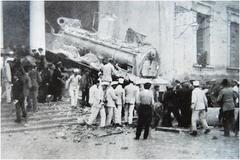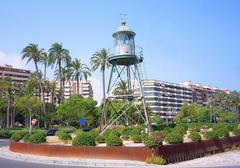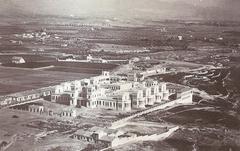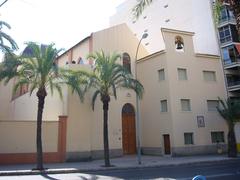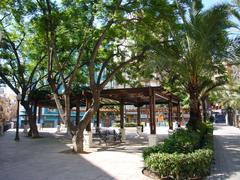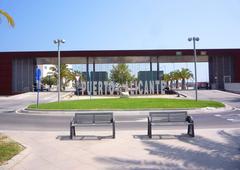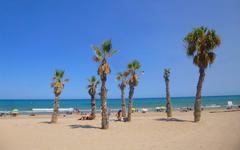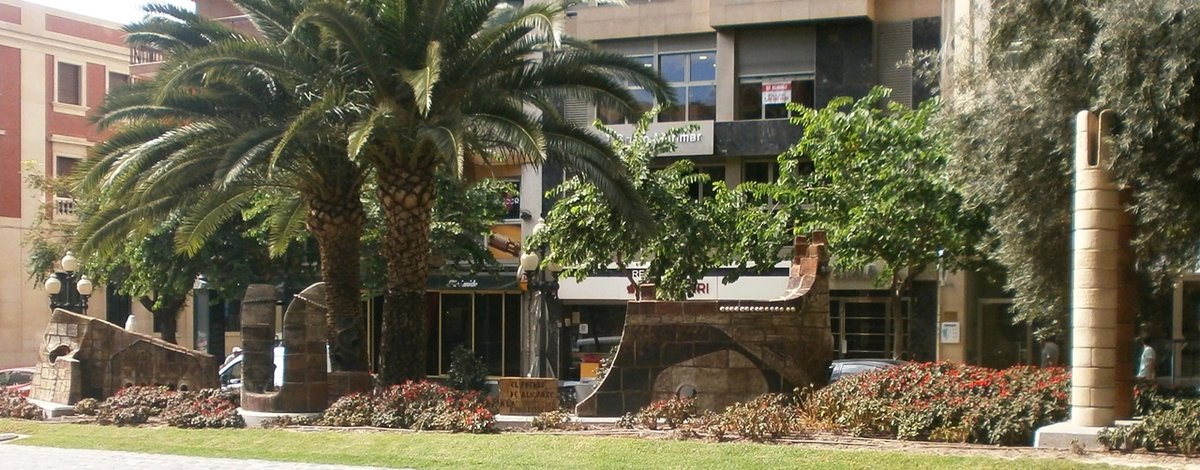
Monumento Del Pueblo De Alicante A La Constitución Española
Monumento Del Pueblo De Alicante A La Constitución Española: The Definitive Guide
Date: 14/06/2025
Introduction
The Monumento Del Pueblo De Alicante A La Constitución Española is a prominent public monument in Alicante, Spain, commemorating the country’s transformative journey from authoritarian rule to democracy, as established by the Spanish Constitution of 1978. Situated in the heart of Alicante, this monument not only marks a pivotal moment in Spanish history but also embodies the city’s civic pride and commitment to democratic values. Whether you are a history enthusiast, cultural traveler, or casual visitor, this guide provides a comprehensive overview—covering the monument’s historical context, artistic significance, visiting details, and practical tips to help you make the most of your visit (alicanteturismo.com, alicantepedia.com, spain.info).
Historical Context
The Path to Democracy
Spain’s transition to democracy began after the death of General Francisco Franco in 1975, ending a long period of dictatorship. Under the leadership of King Juan Carlos I and Prime Minister Adolfo Suárez, Spain enacted major reforms, culminating in the 1978 Constitution. This foundational document ushered in a parliamentary monarchy, recognized regional autonomy, and enshrined fundamental rights and liberties for all Spanish citizens (humanidades.com, administraciondejusticia.com).
Local Significance
For Alicante, the monument serves as both an artistic landmark and a civic space, symbolizing the city’s embrace of democratic values. Its central location reflects Alicante’s historic role within Spain’s broader political transformation and its ongoing commitment to civic engagement (alicanteturismo.com).
Monument Description and Artistic Significance
Design and Symbolism
Commissioned in 1986 and designed by Arcadio Blasco, a renowned Alicante artist, the monument is a modernist sculpture made from ceramic and concrete—materials that reference both local artisanal traditions and the enduring values the monument represents (wikipedia.org). Its abstract, geometric forms symbolize unity, resilience, and the dynamic spirit of democracy.
Key Features:
- Central Pillar: Represents the enduring nature of constitutional values and the aspirations of the Spanish people.
- Bas-reliefs and Inscriptions: Scenes and texts reference Spain’s democratic transition and highlight key articles of the Constitution, often in both Spanish and Valencian.
- Circular Base: Signifies inclusivity and unity.
- Ceramic Detailing: Connects the monument to Alicante’s Mediterranean heritage.
The monument is intentionally interactive, inviting visitors to move around and through its elements, contemplating the significance of democracy and civic life (alicantepedia.com).
Visiting Information
Location and Accessibility
The monument is located on the Rambla de Méndez Núñez, a central, lively avenue that connects Alicante’s historical old town with the modern city center. The area is surrounded by shops, cafes, and gardens, with major attractions like Mercado Central, the marina, and the Explanada de España within walking distance (Traveltomtom).
Accessibility:
- Wheelchair accessible with smooth pavements and curb cuts.
- Suitable for families with strollers.
- Easily accessible by tram, bus (nearest stop: Luceros), and on foot. Several public parking garages are nearby.
Opening Hours and Admission
- Hours: Open 24 hours a day, 7 days a week. The site is well-lit at night for safe evening visits.
- Admission: Free; no tickets required.
Best Times to Visit
- Spring and Autumn: Mild weather and fewer crowds.
- Summer: Early morning or late afternoon is best to avoid the heat (can exceed 30°C/86°F).
- Winter: Mild temperatures and quieter atmosphere.
Visitor Experience
Atmosphere
Set amidst landscaped gardens and the urban vibrancy of the Rambla, the monument offers visitors a tranquil oasis for reflection. Benches and shaded areas are available for rest, while the surrounding boulevard is ideal for people-watching and soaking in Alicante’s ambiance.
Photography
The monument’s abstract geometry and ceramic textures create striking visual contrasts, especially during sunrise and sunset. It is a favorite spot for photography—be sure to tag your photos on social media to help others discover this unique site.
Guided Tours
While there are no dedicated tours for the monument alone, it is often included in city walking tours focusing on Alicante’s history and public art. Local guides provide context on the Spanish Constitution and Arcadio Blasco’s artistic vision. For bookings, inquire at the tourism office or local operators (alicantepedia.com).
Amenities and Nearby Attractions
- Eating and Shopping: Numerous cafes, restaurants, and shops line the Rambla de Méndez Núñez.
- Public Facilities: Nearby restrooms, ATMs, and tourist information points.
- Family-Friendly: Parks and playgrounds are close by.
- Other Sites: Castillo de Santa Bárbara, Explanada de España, Mercado Central, and the Barrio de Santa Cruz are all within a 10–15 minute walk (The Crazy Tourist).
Events and Civic Activities
- Constitution Day (December 6): The monument becomes a focal point for civic ceremonies, with floral offerings and community gatherings commemorating Spain’s democratic transition (alicanteout.com).
- Educational Programs: Schools and universities often incorporate visits here into their civic education curricula.
Practical Tips
- Wear comfortable shoes for exploring the area.
- Stay hydrated and use sun protection in the summer.
- Respect the monument, particularly during official ceremonies.
- Combine your visit with a coffee or meal at a nearby café to experience local culture.
- Check for Constitution Day events or guided tours during your visit.
Frequently Asked Questions (FAQ)
Q: What are the visiting hours?
A: The monument is accessible at all hours, as it is located in an open urban space.
Q: Is there an admission fee?
A: No, visiting is free for everyone.
Q: Are there guided tours?
A: While the monument does not have dedicated tours, it is regularly included in broader city walking tours.
Q: Is the monument accessible to people with disabilities?
A: Yes, the area is wheelchair accessible.
Q: Can I take photographs?
A: Yes, photography is encouraged.
How to Get There
- By Foot: Located centrally, just north of the Explanada de España.
- By Tram/Bus: Luceros tram stop is a five-minute walk away; several city buses serve the area.
- By Car: Use nearby garages such as Parking Mercado Central (Alicante city website).
Summary and Recommendations
The Monumento Del Pueblo De Alicante A La Constitución Española is a dynamic symbol of Spain’s democratic rebirth and Alicante’s vibrant civic identity. Integrating art, history, and public life, it stands as a tribute to the resilience and aspirations of the Spanish people. Its central location, free access, and inclusion in city tours make it an essential stop for any visitor to Alicante. Whether you attend a Constitution Day ceremony, join a walking tour, or simply enjoy the monument’s artistic beauty, you will gain a deeper appreciation for Spain’s democratic heritage and Alicante’s cultural vitality (alicanteout.com, alicantepedia.com, wikipedia.org).
For updates on events, guided tours, and more, download the Audiala app and follow Alicante’s official tourism channels. Experience Alicante’s living history at this remarkable monument.
Sources and Further Reading
- Alicante Turismo – Monumentos
- AlicantePedia – Monument Details
- Alicante City Council – Patrimonio Cultural
- AlicanteOut – Ruta Casco Antiguo Alicante
- Wikipedia – Monumento del pueblo de Alicante a la Constitución Española
- Traveltomtom – Alicante Travel Tips
- Humanidades – Constitución Española de 1978
- Administracion de Justicia – Tema 1 Auxiliar AGE
- Spain.info – Alicante Destination
- The Crazy Tourist – Best Things Alicante
- Alicante City Guide – Lonely Planet
- Alicante Official Tourism
- Discover Walks – Alicante Facts
- Que ver en el mundo – Historia de Alicante
- Alicante Guide – LinkAlicante
- Audiala App

